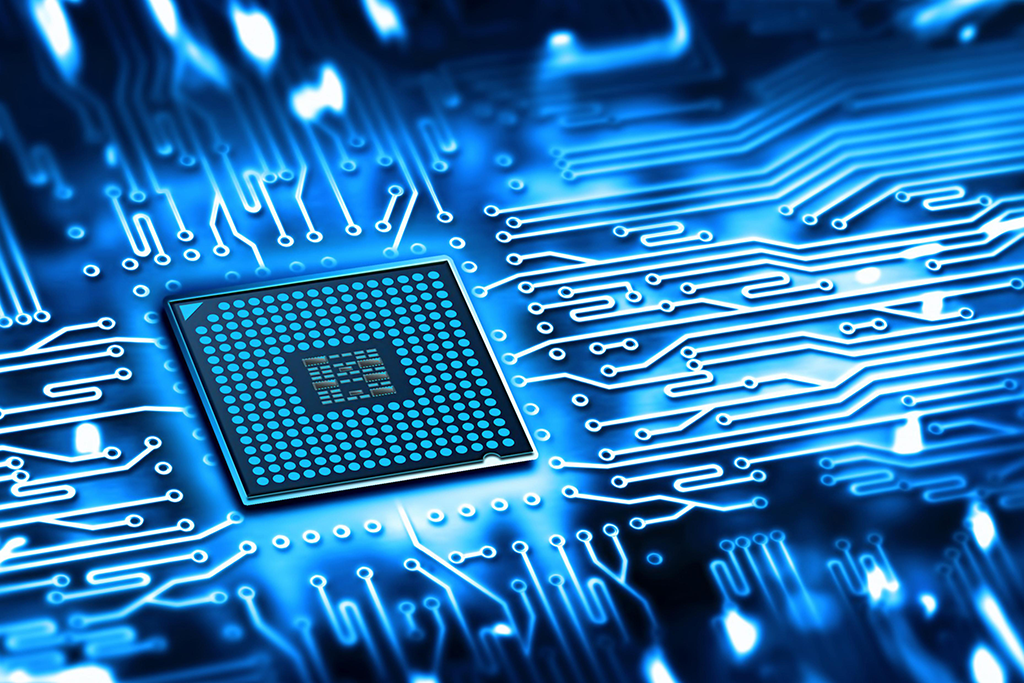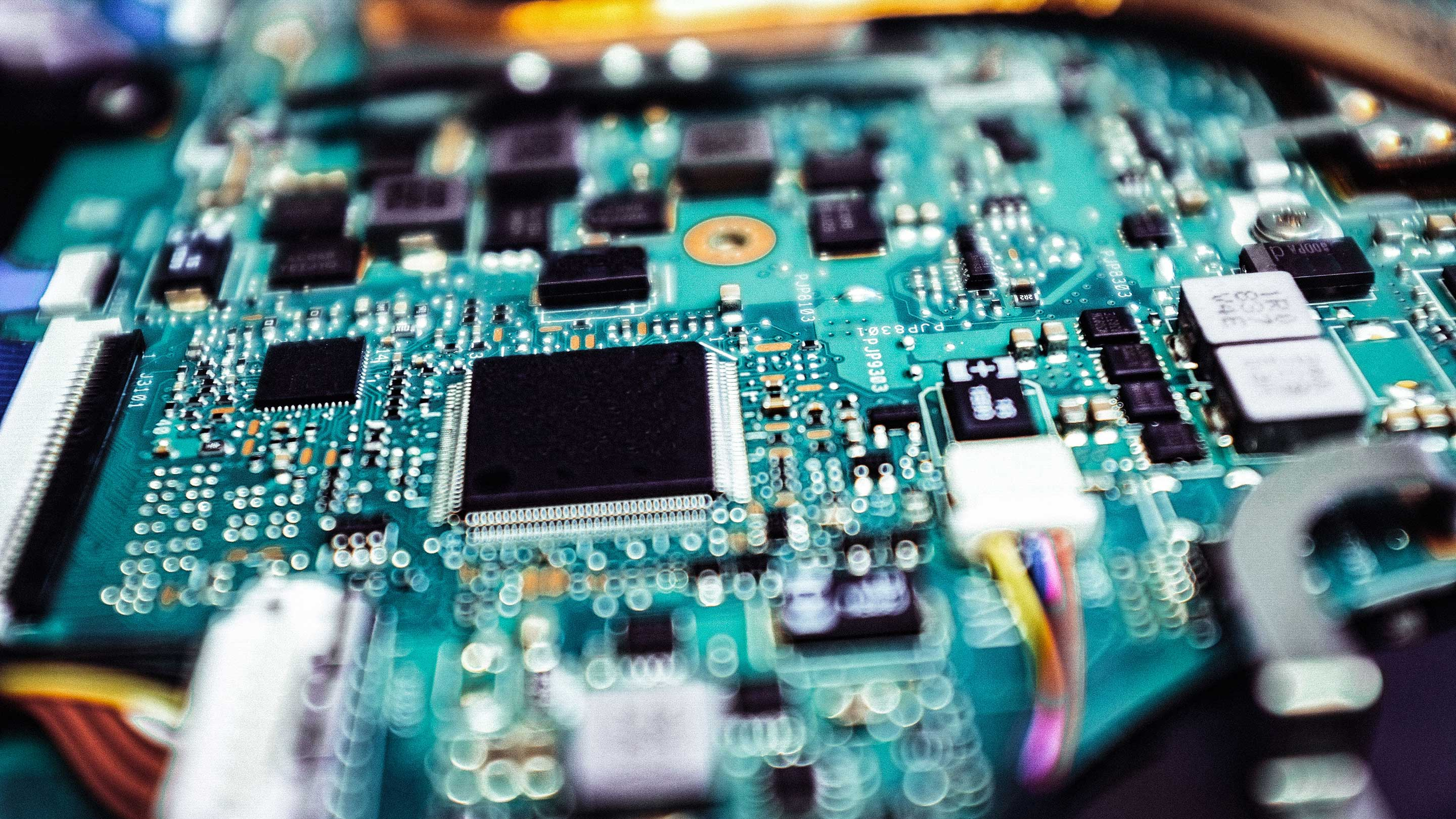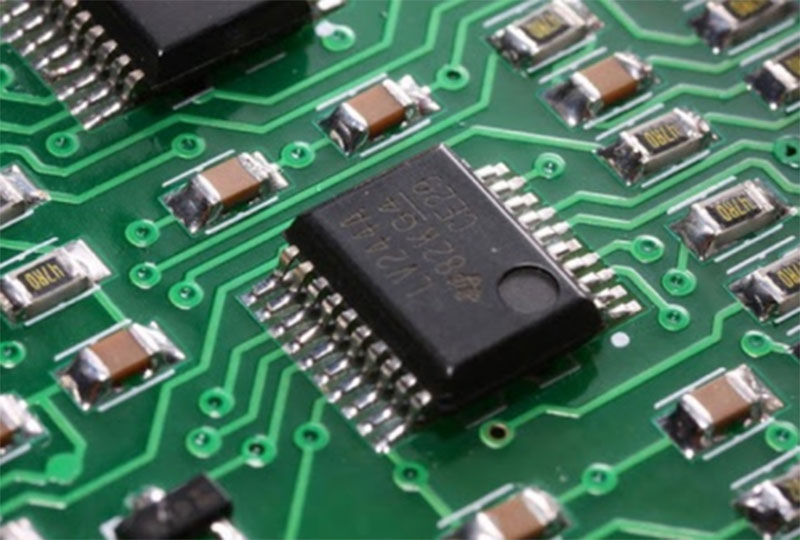
Semiconductor technology is one of the most important and rapidly changing fields in the modern world.
The last few decades have seen astounding advances in semiconductor manufacturing, resulting in ever-smaller, more powerful, and more efficient devices.
However, with so many different types of semiconductor technology out there, it can take a lot of time, and effort to keep up with the latest developments.
In this blog post, I will compare the top semiconductor technologies worldwide, looking at their respective strengths and weaknesses.
So, whether you’re a semiconductor manufacturer, engineer, or just interested in the latest tech, read on for a comparison of the leading semiconductor technologies!
What Are Semiconductors?

Semiconductors are materials that have electrical conductivity between that of a conductor and an insulator.
They are extensively found in electronic devices such as transistors, solar cells, and diodes.
Semiconductors are made of elements from Group 14 of the periodic table, such as germanium, or compounds like gallium arsenide as well as silicon. Besides, rare gasses and impurities are also included in the manufacturing process to alter the material’s conductivity.
They have the ability to control the flow of electrical current and can be used to switch or amplify electronic signals.
They are essential components which are used to power electronics, including computers, mobile devices, and other digital devices.
They are also found in your personal computers as CPU, and Graphics Processing Units (GPU).
Besides, they are integrated in many modern technologies like LEDs, lasers, wi fi devices, and even renewable energy like Solar Panels.
Semiconductors have revolutionized the way we live, work, and communicate. They are the foundation of the electronic age and continue to be an essential element of technological advancement and consumer electronics.
The History of Semiconductor Technology

The history of semiconductor technology can be traced back to the late 19th century when scientists first discovered the electronic properties of certain materials.
In 1873, Willoughby Smith discovered that selenium had photoconductive properties, and in 1874, Frederick Guthrie discovered that certain materials, such as aluminum, could be used as electrical conductors.
In the early 20th century, scientists such as William Shockley, John Bardeen, and Walter Brattain at Bell Labs developed the first practical semiconductor device, the transistor, patented in 1947.
The invention of the transistor, which could amplify and switch electronic signals, marked the beginning of the modern semiconductor industry.
In the following decades, advances in semiconductor technology led to the development of the integrated circuit (IC). This tiny device could contain multiple transistors, diodes, and other components on a single piece of semiconductor material. Robert Noyce and Jack Kilby developed the first IC at Texas Instruments in 1958.
In the 1970s and 1980s, semiconductor technology advanced, developing more complex ICs, such as microprocessors and memory chips. These advancements paved the way for the personal computer revolution and the development of other digital devices such as mobile phones, digital cameras, and MP3 players.
Today, semiconductor technology is still advancing, with newer technologies like 3D ICs and nano-electronics being developed to improve electronic device performance and energy efficiency.
Semiconductor technology is also used in new applications such as artificial intelligence, quantum computing, and IoT.
How Has Semiconductor Technology Evolved Over The Years?
Semiconductor technology has evolved significantly over the years, with advancements in areas such as miniaturization, increased performance, and energy efficiency.
One of the key developments has been the shrinking of transistor sizes, which has led to an increase in the number of transistors that can be placed on a single chip. This has allowed for the development of faster and more powerful computer processors and other electronic devices.
Additionally, improvements in manufacturing processes have allowed for the production of smaller and more complex semiconductor devices.
Other advancements have included the development of new materials and new device structures, such as 3D transistors, which have further improved performance and energy efficiency.
Here is a brief timeline of how semiconductors have evolved over time:
· 1947: William Shockley, John Bardeen, and Walter Brattain at Bell Labs invented the first practical point-contact transistor.
· 1958: Robert Noyce and Jack Kilby at Texas Instruments and Fairchild Semiconductor independently invent the first integrated circuit (IC).
· 1967: The first DRAM (dynamic random-access memory) chip is introduced by Robert Heath Dennard.
· 1971: Intel releases the first microprocessor, the Intel 4004.
· 1981: IBM launches its first personal computer (PC) using an Intel microprocessor.
· 1986: The first 1-megabit DRAM chip is introduced.
· 1989: The first 4-megabit DRAM chip is introduced.
· 1991: The first 16-megabit DRAM chip is introduced.
· 1993: Intel releases the Pentium processor, featuring a clock speed of 60 MHz and 3.1 million transistors.
· 1997: The first 64-megabit DRAM chip is introduced.
· 1998: The first 256-megabit DRAM chip is introduced.
· 2000: Intel releases the Pentium 4 processor, featuring a clock speed of 1.4 GHz and 42 million transistors.
· 2001: The first 1-gigabit DRAM chip is introduced.
· 2003: The first 2-gigabit DRAM chip is introduced.
· 2007: The first 4-gigabit DRAM chip is introduced.
· 2008: The first 8-gigabit DRAM chip is introduced.
· 2011: Intel releases the Sandy Bridge processor, featuring a clock speed of 3.4 GHz and 1.16 billion transistors.
· 2014: Samsung introduces the first 8 GB LPDDR4 (low-power double data rate 4) mobile DRAM chip.
· 2018: Intel releases the Core i9-9900K processor, featuring a clock speed of 3.6 GHz and 18.3 billion transistors.
· 2019: Samsung develops the first 12 GB LPDDR5 mobile DRAM chip.
· 2022: Samsung develops the first 16 GB LPDDR5 mobile DRAM chip.
Please note that this is a general timeline, and there are many more milestones in-between, and other companies also contributed to developing technology for semiconductors and integrated circuits.
The Current State of the Semiconductor Industry
The semiconductor industry is currently experiencing a period of strong growth. This is driven by many factors, including increasing demand for electronic devices and the growing importance of technologies such as artificial intelligence (AI) and the Internet of Things (IoT).
One of the main drivers of growth in the semiconductor industry is the increasing adoption of smartphones, tablets, and other mobile devices. These devices rely on a wide range of semiconductors, including processors, memory chips, and sensors, leading to strong demand for these products.
Another driver of growth in the semiconductor industry is the increasing importance of technologies such as AI and IoT. These technologies require specialized semiconductors, such as GPUs and TPUs, which are used for complex calculations and machine learning. Additionally, the increasing adoption of connected devices and the growing importance of the Internet of Things (IoT) is driving growth in the semiconductor industry, as well as in the development of specialized chips for IoT applications such as sensors, wireless connectivity, and edge computing.
In addition, the industry is seeing strong growth in the automotive sector due to the increasing adoption of electric vehicles and the development of autonomous driving. This drives demand for specialized semiconductors, such as sensors and processors, used in these vehicles.
Overall, the semiconductor industry is currently experiencing a period of strong growth, driven by a combination of factors, including increasing demand for electronic devices, the growing importance of technologies such as AI and IoT, and the development of the automotive sector.
Comparison of the Top Three Semiconductor Technologies in the World
It is difficult to definitively say which are the top three semiconductor technologies worldwide as it can depend on the specific application or market segment. However, some of the most widely used and advanced semiconductor technologies currently include:
1. FinFET technology: It is a type of 3D transistor that provides improved performance and power efficiency compared to traditional planar transistors. It is widely used in high-performance processors and other advanced applications such as mobile devices and servers. The main advantages of FinFETs include high drive current, low leakage current, and improved electrostatic control.
2. EUV (Extreme Ultraviolet) lithography: EUV lithography is an advanced technique used in the manufacturing of semiconductors. It allows for the production of smaller and more complex devices. The main advantage of EUV lithography is that it enables the production of smaller and more complex devices, which can lead to faster and more powerful processors and more energy-efficient devices.
3. Memory technologies: DRAM (dynamic random-access memory) and NAND flash are critical for operating a wide range of electronic devices. The latest memory chips feature larger capacities and higher performance than ever before. The main advantage of these memory technologies is their ability to store and quickly retrieve large amounts of data, which is essential for the smooth functioning of electronic devices.
Other technologies that are also trending in the semiconductor industry include:
· Advanced packaging technologies: They are increasingly crucial for integrating multiple chips and other components into a single package. This enables more powerful devices and reduces power consumption and size.
· Advanced process nodes: The semiconductor industry is currently in the process of transitioning to advanced process nodes, such as 7nm and 5nm, which allow for the creation of smaller and more power-efficient devices.
· High-bandwidth memory (HBM): HBM is a type of memory that is designed to provide high-bandwidth and low-power consumption for high-performance applications such as gaming, AI, and data centers.
· Silicon Photonics: It is a technology that uses silicon as a medium for optical communication. This technology allows for faster data transfer rates and lower power consumption than traditional copper-based connections.
· Quantum Computing: This technology uses semiconductors and quantum-mechanical phenomena, such as entanglement, interference and superposition, to perform operations on data, much faster than standard computers. Quantum computing is expected to significantly impact a wide range of industries, including cryptography, drug discovery, and logistics.
· Neuromorphic computing: It is a technology that mimics the structure and function of the human brain to solve complex problems. This technology is expected to lead to new breakthroughs in areas such as image and speech recognition and is also likely to be more energy-efficient than traditional computing methods.
· 3D NAND: It is a type of flash memory that stacks memory cells on top of one another rather than arranging them in a flat plane. This allows for higher storage densities and improved performance compared to traditional 2D NAND flash.
In summary, each technology has its own set of advantages and disadvantages, and it may be used in different applications and devices.
These technologies are constantly evolving, and future developments and breakthroughs are expected.
Note: Please note that the list is not exhaustive, and many other technologies also play essential roles in the semiconductor industry.
Which Semiconductor Technology Will Dominate In The Future, And Why?
It is difficult to predict which semiconductor technology will dominate in the future, as it will depend on various factors, including technological advancements, market trends, and the specific needs of different industries.
However, some technologies that are likely to play a significant role in the future of the semiconductor industry include the following:
· Miniaturization: As semiconductor companies continue to push the limits of miniaturization, the use of smaller transistors will become increasingly prevalent. This will lead to faster and more powerful processors and more energy-efficient devices.
· 3D NAND: This technology is expected to become increasingly important as the demand for data storage continues to grow. This technology allows for higher storage densities and improved performance compared to traditional 2D NAND flash.
· Artificial Intelligence (AI) and Machine Learning (ML): They are becoming increasingly important in many applications, from self-driving cars to healthcare. This is expected to lead to an increased demand for specialized semiconductors, such as GPUs and TPUs, that can handle the complex calculations required for AI and ML.
· 5G and 6G: The roll-out of 5G networks is driving demand for new semiconductors and technologies, and 6G is expected to bring more capabilities and faster data transfer rates.
· Quantum Computing: It is expected to significantly impact a wide range of industries and will likely become more critical in the future.
Please note that these are some of the most recent and emerging trends in the semiconductor industry, and other technologies may also be significant depending on the specific application or market segment.
The semiconductor industry is constantly evolving, and new technologies are continually being developed, so it is hard to predict which technology will dominate in the future.
5 Biggest Semiconductor Companies
Here are the five largest semiconductor companies in the world based on their brand reputation, revenue, experience, and expertise:
1. Samsung:
· Revenue: $58 billion (2021-2022)
· Year Founded: 1969
· Number of employees: 280,000
Samsung is a South Korean multinational electronics company that is one of the largest semiconductor manufacturers in the world, having companies like Apple, Nokia, Sony, and HTC on its client list.
Since its birth in 1969, the company has spread its operations in over 74 countries, with over 280,000 employees. It has captured around 17% of the global foundry market and has generated around 58 billion in revenue in 2022.
Samsung has a strong vertical integration, which means they control all aspects of production, from research and development to manufacturing and distribution. This allows them to control costs and optimize their supply chain.
They produce a wide range of semiconductor chip, including dynamic random-access memory (DRAM), flash memory, and system-on-a-chip (SoC) products, which are in high demand for a wide range of electronic devices, including smartphones, tablets, and other mobile devices, as well as computers and servers.
They also have a strong presence in the application processors for mobile devices and other consumer electronics.
2. Intel:
· Revenue: $79 billion (2021-2022)
· Year Founded: 1968
· Number of employees: 110,000
Intel, an American multinational corporation and technology company based in California, is one of the world’s largest manufacturers of semiconductor chips.
They have held a dominant market position in the microprocessor market for many years due to their innovation, diversified product portfolio, strong R&D team, impressive brand recognition, and unmatchable global presence.
Intel produces a wide range of semiconductors, including 86x series microprocessors, chipsets, and other components for computers, servers, and other electronic devices. Besides, they also offer products for the Artificial Intelligence (AI), Internet of Things (IoT), and data centers. This diversification has helped the company to stay competitive and grow its revenue.
They have shipped advanced chips, integrated circuits, and other products to tech giants like Dell, Lenovo, and HP.
3. SK Hynix:
· Revenue: 35.27 billion (2021-2022)
· Year Founded: 1983
· Number of employees: 36,854
SK Hynix is a South Korean multinational corporation that is one of the world’s largest manufacturers of memory semiconductors.
They produce a wide range of memory products, including DRAM and NAND flash memory. These products are in high demand for a wide range of electronic devices, including smartphones, tablets, and other mobile devices, as well as computers and servers.
SK Hynix is known for its advanced technology, which allows it to produce memory chips with higher densities and faster speeds than competitors. This is important in meeting the growing demand for high-performance memory products.
They also have a strong financial position, along with a well-equipped manufacturing facility, highly-trained employees, and an expert R&D team, which have allowed the company to tap into different markets and end-users. They now operate globally and have a strong presence in Asia, Europe, and America.
4. Taiwan Semiconductor Manufacturing Co. (TSMC):
· Revenue: $46.12 billion (2021-2022)
· Year Founded: 1987
· Number of employees: 65152
TSMC, abbreviated as Taiwan Semiconductor Manufacturing Company, is one of the world’s largest semiconductor foundry that manufactures semiconductors for other companies, such as Apple, Qualcomm, and NVIDIA, among others.
They specialized in the production of advanced process nodes, such as 7nm, 5nm, and 3nm, which allows the company to produce smaller and more power-efficient chips. This is important in meeting the growing demand for high-performance and energy-efficient devices.
TSMC also specializes in producing integrated circuits, analog chips, and high-end chips as well as advanced packaging technologies such as wafer-level packaging, fan-out wafer-level packaging, and System-in-Package. This allows the company to offer a complete solution to its customers.
5. Micron Technology:
· Revenue: $30.75 billion (2021-2022)
· Year Founded: 1978
· Number of employees: 48000
Micron Technology is an American multinational corporation that is one of the leading manufacturers of memory semiconductors. They produce a wide range of memory products, including DRAM, NAND flash memory, and other memory technologies.
They also have a strong focus on developing new technologies like 3D memory, which is expected to have a big impact in the future.
The company has a strong presence in the automotive, industrial, and IoT segments, which are expected to be high-growth areas in the future. Besides, they operate globally and have a strong presence in Asia, Europe, and America, which allows the company to tap into different markets worldwide.
Please note that this list may vary depending on the sources and the period of time, but the above-mentioned companies are considered to be among the biggest companies in the semiconductor industry.
Some other semiconductor companies that are also leading the industry includes, Qualcomm Inc. (QCOM), Advanced Micro Devices (AMD), and ASE Technology Holding Co. Ltd. (ASX).
These companies are constantly evolving and working on new technologies, mergers, and acquisitions, so the ranking and list may change over time.
Conclusion,
The global semiconductor market is expected to reach US$1 trillion (growing at a CAGR of 7%) by 2030.
With so many different technologies available, knowing which one is right for your needs can be challenging. This article provided a comparison of the leading semiconductor technologies in the world.
Do you have experience with any of these technologies? Share your ideas in the comments below.
